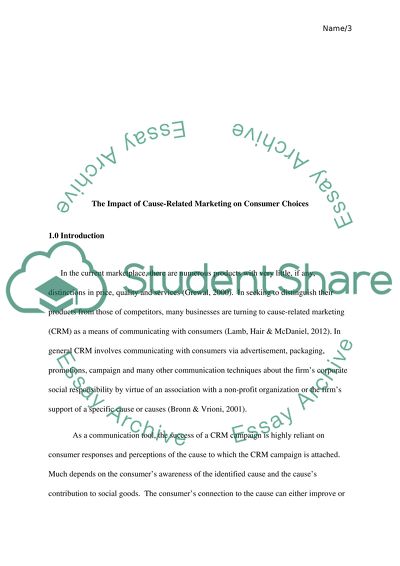Cite this document
(“The Impact of Cause-Related Marketing on Consumer Choices Research Paper”, n.d.)
Retrieved from https://studentshare.org/marketing/1396469-the-impact-of-cause-related-marketing-on-consumer-choices
Retrieved from https://studentshare.org/marketing/1396469-the-impact-of-cause-related-marketing-on-consumer-choices
(The Impact of Cause-Related Marketing on Consumer Choices Research Paper)
https://studentshare.org/marketing/1396469-the-impact-of-cause-related-marketing-on-consumer-choices.
https://studentshare.org/marketing/1396469-the-impact-of-cause-related-marketing-on-consumer-choices.
“The Impact of Cause-Related Marketing on Consumer Choices Research Paper”, n.d. https://studentshare.org/marketing/1396469-the-impact-of-cause-related-marketing-on-consumer-choices.


